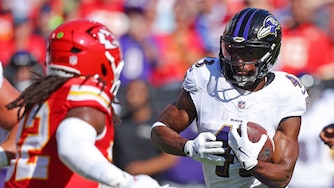Thoroughbred racehorses running the Preakness Stakes this Saturday will reach speeds of up to 44 miles per hour. They will carry their own 1,200 pounds plus a human over 1 3/16 mile in under two minutes.
Anyone witnessing the feat at the Northwest Baltimore track may wonder how horses do it.
Now a Johns Hopkins Medicine eye doctor of all people has new research suggesting an explanation: an ancient change in horse DNA.
“What makes horses so unique in society is their speed, stamina and very large size,” said Dr. Elia Duh, professor of ophthalmology in the Hopkins’ Wilmer Eye Institute who studied equine evolution to help solve questions about human blindness. “We found horses developed a unique gene mutation to make it possible.”
Millions of years ago, horses were the size of dogs and struggled to outrun predators.
The mutation however allowed them to grow bigger muscles, hearts and lungs. They used their larger size at first to run away. Later, their bigger stature enabled them to serve as workhorses, warhorses and also, racehorses. They were able to create more energy and withstand the bodily damage caused by their heightened performance.
Read More
Think of Secretariat, regarded as one of the greatest racehorses ever, who was found to have a heart estimated to weigh 22 pounds, two-and-a-half times the average horse heart.
Duh looked to a process born from the genetic mutation in such horses that involves two proteins. It allows horses to use their big lungs and hearts to take in and circulate more oxygen. The extra oxygen enables horses to create more energy in their large muscles.
Normally, when bodies burn more oxygen, they create more harmful side products, like when cars burn more fuel. The process is called oxidative stress, and the results are damaging to cells.
But horses use two proteins called NRF2 and KEAP1, which work in tandem to respond to the extra stress by releasing more antioxidant and anti-inflammatory substances that protect their cells.
Duh discovered the horse gene mutation while studying a mechanism he thought could be adapted to treat and prevent damage in humans. For the eye specialist, that could mean helping to cure macular degeneration and other diseases causing blindness.
Equine experts have long understood that horses, as well as donkeys and zebras, adapted over time to become star athletes. The origin of such adaptation, however, was unknown.
Dr. Doug Antczak, a professor emeritus from the Cornell University College of Veterinary Medicine’s Baker Institute for Animal Health, explained that humans did specifically bred horses for other desirable traits, like size, color and behavior. They produced everything from mini-ponies to large endurance animals for big jobs and long runs, he said.
Antczak said in more modern times, over the last 5,000 or so years, humans likely played a role in “domesticating wild horses so they would be willing to carry loads, including people, on their backs.”
The evolution and tampering hasn’t made racehorses invincible. Their extra long, slender legs allows them to run faster, but that also makes them vulnerable to breaks that are difficult to fix. Horses just won’t do extended bedrest, he said.
Even with medical care, bad breaks don’t heal. And extra weight on the other legs leads to a condition called laminitis, a painful inflammation in the tissue connecting hoof to bone. These severely injured horses often have to be euthanized.
Antczak said there is ongoing research to address horse health. In addition to advancements in breeding, the work is focused on improving nutrition, altering track surfaces and even using sensors to monitor training schedules to head off overuse injuries.
The research that interests Duh at Hopkins is how horses benefit from their genetic makeup and how it could translate to humans. His study was produced in collaboration with Vanderbilt University researchers and published March 27 in the journal Science.
Duh said he and his colleagues plan to keep investigating to see if understanding how horses safely process energy could eventually be applied to help treat or cure his patients and others with chronic diseases.
It would be one more contribution, he said, from the ever-evolving horse.




Comments
Welcome to The Banner's subscriber-only commenting community. Please review our community guidelines.